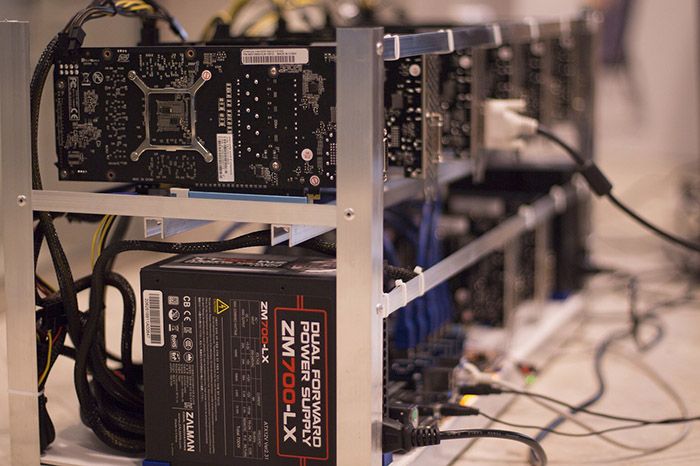
As the cryptocurrency market explodes, more and more businesses are looking for novel ways of turning the trend into revenue. Mining is an obvious option, but it requires expensive hardware and it can blow up your power bill. What if you could get other people to do the mining for you?
That’s an idea that first gained popularity with hackers, who would inject crypto mining scripts into major websites, using users CPUs to mine without their knowledge as they browsed the site. But increasingly, website owners are looking at crypto-mining (with user consent) as an above-the-board way to monetize a website without resorting to ads or paywalls.
How Does It Work?
Basically, a script on your website accesses your users’ CPUs (with their consent, of course). As they browse your site, their CPU chugs through a cryptocurrency’s proof-of-work process to generate mining rewards which are then passed on to you. Rather than writing their own code, most sites employ an existing service like Coinhive or Monerise, which takes a cut of your profits before passing them along (more on this later).
The upside of this is that it’s essentially free on your end. If you’ve got a big website audience and they don’t mind being used for mining as they browse, you can generate returns with basically no expenditure of time and money on your end.

That’s not to say it’s without risks, though. The biggest risk is that it annoys your users in some way. It’s not likely to affect their power bill noticeably unless they spend a ton of time on your site, but if they browse your site via laptop or mobile, it could definitely eat a noticeable chunk of their battery. Plus, on-site crypto miners can sometimes cause red flags with web security software that marks your site as malicious since they’re also used by hackers.
How Much Can You Make?
That’s the first question most businesses will ask, and the answer is that it varies, but don’t expect to get rich. Most cryptocurrencies aren’t particularly well-suited for CPU mining and the short session lengths most users have on a single site makes a single user’s contribution minimal.
To put some numbers to it, developer Max Cornet rain Coinhive’s Monero miner on his site for three days, averaging 1,000 sessions a day and 55 seconds a session. The results were underwhelming: 0.00947 XMR, which at the time was worth $0.89.
On the other hand, at today’s Monero price, that would be more like $3.50. Not exactly a windfall, but nothing to sneeze at either considering how low-effort web-based mining is. And of course, a website with more traffic or longer average sessions could expect to generate proportionally larger returns. An estimate of The Pirate Bay’s crypto-mining test suggests that at today’s Monero price, the site could be earning $51,000 a month from mining on users’ CPUs.
Of course, the returns also depend on how much of a user’s CPU you’re willing to use, and for how long. The more resources your miner uses, the faster you’ll generate Monero, but users are more likely to be annoyed if you’re using a big proportion of their CPU and bogging down their machine as a result.
What Are Your Options?

Want to give on-site mining a try? Of course you could write your own custom code, but there are a few plug-and-play options that make it fast and easy.
Coinhive
There’s CoinHive – that’s the mining script that many hackers used, but it’ll work on legit sites too (although beware that some browsers consider it malware). It’s pretty easy to install; all you’ll need to do is sign up for the service and then plug a chunk of code into your site. The minimum payout is 0.05 XMR (about $18 as of this writing), but once you hit that threshold you’ll be paid quite quickly.
The downside? Coinhive takes a 30% cut of your earnings.
Monerise
Monerise is another newcomer that offers ridiculously easy installation. Using an easy-to-understand GUI on Monerise’s site, you can configure your on-site miner to use as much or as little user CPU power as you’d like, input your Monero address, and then the Monerise site generates a cut-and-paste code you can drop into your own site. Done.
Monerise also offers other conveniences, like built-in user notification (so your audience can opt out of mining if they’d prefer) and an on-site monitor that shows your mining stats. It takes a cut, too, that scales depending on your usage and mining settings, but typically is around 13-15%.
CryptoNoter
Don’t want to pay those kinds of fees? CryptoNoter is an open-source in-browser miner that takes no commission at all. The downside is that it’s not as quick-and-easy to install as Coinhive or Monerise, and might require some help from a developer if you’re not a coder yourself.
If you’re not a developer and don’t know one, the project’s creator does offer installation help for 1 XMR. That’s a heavy price to pay, but if you’ve got a high-traffic site, it might just be worth it since you’ll save a lot in fees over the long run.
CoinLink
A slightly different option is CoinLink, a URL shortener that you could use with links on your site to take users first to an intermediary page that mines a little Monero for you. It’s not the most user-friendly experience, though, as it keeps users on the page to mine for minutes before redirecting them. It also won’t work if they have an adblocker on.



































